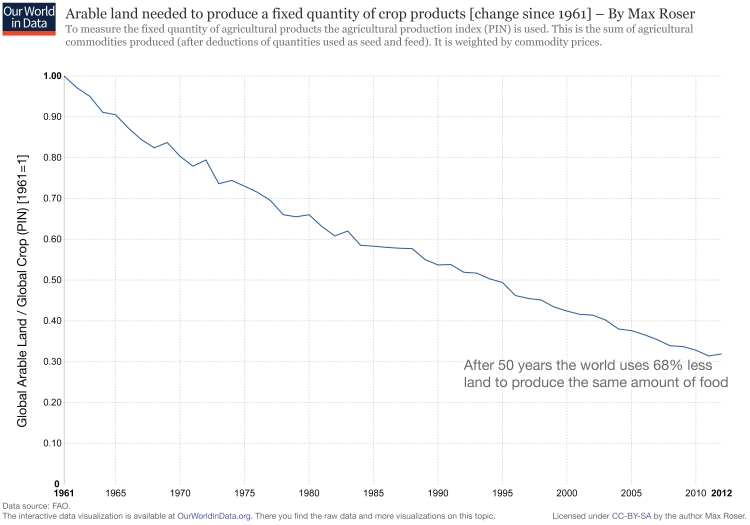Publisher's note: The author of this post is Dr. Roy Cordato, who is Vice President for Research and resident scholar for the John Locke Foundation.
1. Are supplies of "finite" natural resources really fixed?
Pick your natural resource: oil, land, copper, coal, you name it. At one time or another, it has been predicted that we will one day run out of that resource. These predictions have all been based on a false economic assumption, namely that because the physical quantity of something is finite, the economically relevant supply of that resource is fixed.
In reality though, the profit motive within the context of a free market, spontaneously generates a very strong conservation ethic, which automatically leads to increases in the economically relevant supply of natural resources. It is a conservation ethic much stronger than any that could be generated by government jawboning or all the Audubon Society and Sierra Club PSA campaigns put together. For a profit maximizing business, the use of any natural resource represents a cost that they are seeking to minimize. In other words, they are continuously trying to get more output with fewer and fewer inputs. And when a business figures out a way to do this, it actually increases the economically relevant supply of the resource without ever increasing the physical supply. It is true that profit seekers are always on the hunt for new sources of energy, but it is also because businesses have, over the years, been continuously increasing the amount of products they can produce with less and less energy that we have seen the supply of oil, coal, and other sources of energy increase. (see
Sustainable Growth, p. 31) This is in spite of the fact that every few years, going back to at least the mid 1800s, we are told that
the day we will run out of these resources is right around the next corner.
But probably the resource that has been the subject of the most gloom and doom predictions, going back to Thomas Malthus in the late 18th and early 19th centuries, is land. And the concern is obvious. The physical amount of land on the planet is fixed. With a growing population and land necessary for growing food fixed, we will need to devote more and more land to food production until one day there just ain't no more. Then we will have famine, starvation, the whole shootin' match. But with farmland, like everything else, people are always trying to do more with less. Consequently, we are producing more and more food using less and less land, leaving that land available for other things — like housing, and building factories that end up producing automobiles and computers, and restaurants, and super markets for selling the food, etc. etc. All of these things are being built on land that was once necessarily used for farming.
Below is a graph showing the amount of land that has been used to product the same quantity of food starting in 1961. The fact is that this graph could be extended back for another hundred years and the trend would look pretty much the same. (Thanks to Professor Don Boudreaux at George Mason University for positing the graph on his blog —
Cafe Hayek.)

2. NC ozone report
The 2015 ozone season began on April 1 and, as I have been doing since this newsletter was started, each week during the ozone season this newsletter will report how many, if any, high ozone days have been experienced throughout the state during the previous week, where they were experienced, and how many have been recorded during the entire season to date. (Note: ground level ozone, which is what we are reporting on, is often called "smog.") According to current EPA standards a region or county experiences a high ozone day if a monitor in that area registers the amount of ozone in the air as 76 parts per billion (ppb) or greater. The official ozone season will end on October 31. All reported data is preliminary and issued by the North Carolina Division of Air Quality, which is part of the state's Department of Environment and Natural Resources. Thus far this season there have been no high ozone days recorded on any of the state's 42 monitors.
The table below shows all of North Carolina's ozone monitors and the high reading on those monitors for each day of the 7-day period, May 25-31.




























